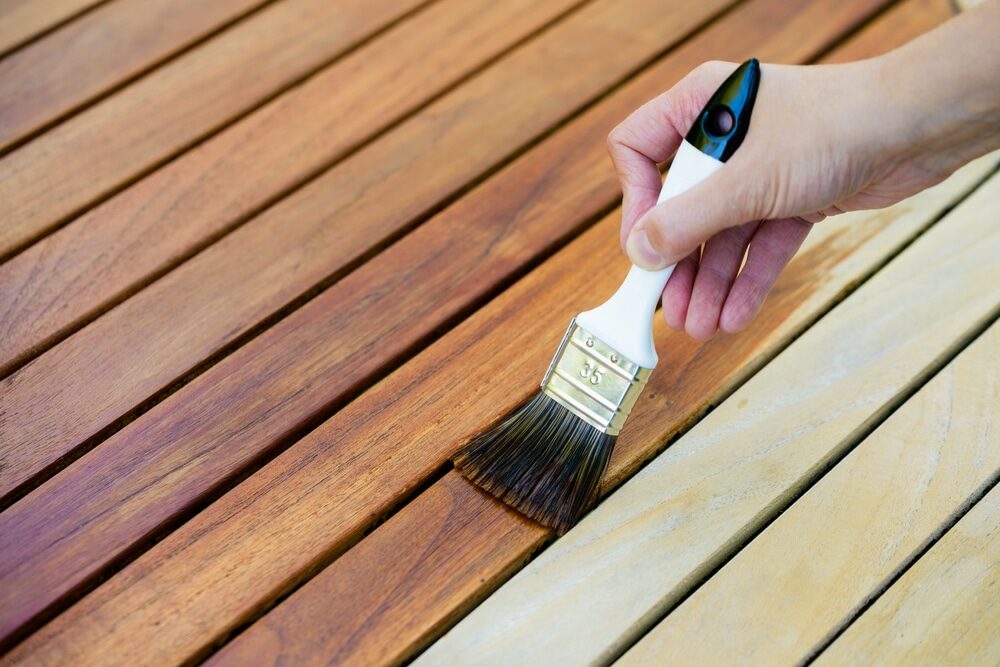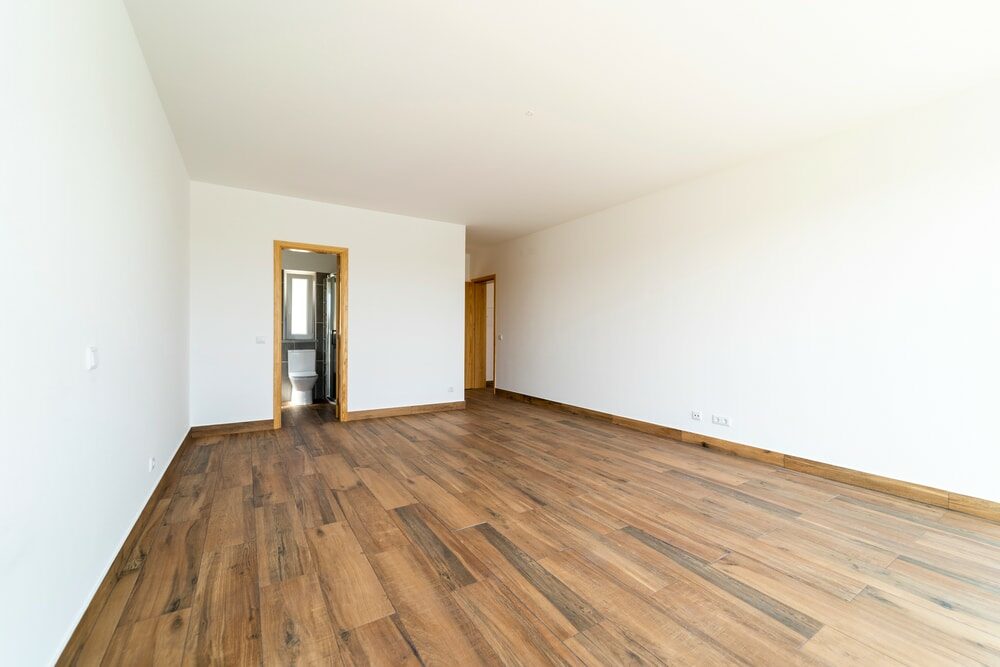London:
Nationwide:
The Timeless Appeal of Wooden Floors: A Historical Overview
Posted on December 31, 2023
Wood Flooring

Historical Elegance of Wooden Floors: An Enduring Legacy
Wooden floors have a unique charm that transcends time and trends, a quality that makes them a perennial favourite in the world of architecture and interior design. The warmth and natural elegance they bring to any space are unparalleled, evoking a sense of history and connection to nature. This blog post aims to delve into the rich history of wooden floors, exploring their origins, evolution, and the reasons behind their enduring appeal. By tracing their journey from ancient times to modern days, we can gain a deeper appreciation for these timeless pieces of art under our feet.
The history of wooden flooring is as old as civilization itself, with evidence of its use dating back to ancient times. Initially, wood was chosen for practical reasons: it was readily available, easy to work with, and provided excellent insulation against cold and damp conditions. But as time passed, the aesthetic potential of wood began to be recognised and appreciated. Intricate designs and patterns started to appear, transforming plain wooden planks into stunning works of art that reflected the culture and craftsmanship of the era.
Throughout different historical periods, wooden floors have adapted and evolved, mirroring the changing tastes, technologies, and socio-economic conditions of the times. From the grand halls of mediaeval castles to the elegant homes of the Renaissance and through the mass-produced floors of the Industrial Revolution, each era left its mark on the style and production methods of wooden flooring. This evolution is not just a tale of fashion and function, but also a reflection of the technological advancements and artistic sensibilities of each period.
Today, wooden floors continue to be a popular choice, valued for both their beauty and sustainability. Modern advancements have made wooden flooring more accessible and diverse than ever before, with a wide variety of types, finishes, and installation techniques available. This blog post aims to explore the ongoing relevance of wooden floors, examining how they have stood the test of time and continue to captivate the imagination of homeowners, designers, and architects alike. As we journey through the annals of history, we’ll uncover the story of wooden floors—a tale of enduring appeal and timeless elegance.
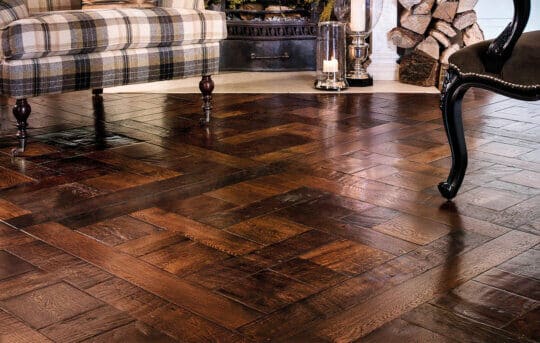
The Origins of Wooden Flooring
The story of wooden flooring begins in the distant past, tracing back to the earliest civilizations known to mankind. The decision to use wood for flooring was initially based more on necessity than on aesthetics. Early humans, seeking shelter and comfort, turned to the natural resources readily available to them. Trees, with their robust and versatile nature, provided an ideal material for constructing not just shelters but also the very ground they walked on.
The earliest recorded use of wooden floors can be traced back to the mediaeval period, where they were primarily seen in the homes of the wealthy and in public buildings like churches and castles. These early wooden floors were rudimentary, made from rough-hewn planks of local wood. They were often simply laid over the earth or stone foundations, creating a surface that was elevated, dry, and relatively warm. The function of these floors was primarily practical, offering a solution to the cold and dampness that pervaded the stone and earthen floors of the time.
As civilizations advanced, so did the techniques and designs employed in wooden flooring. By the time of the Renaissance, wooden floors had become a symbol of wealth and artistry. Skilled craftsmen began experimenting with different types of wood and intricate patterns, creating stunning marquetry and parquetry floors that were true works of art. These floors were no longer just about utility; they were a statement of style and sophistication, reflecting the high status of their owners.
The variety of woods used in flooring also tells a story of trade and exploration. Hardwoods like oak, walnut, and mahogany were highly prized for their durability and appearance. Oak, in particular, was a favourite in Europe due to its abundance and strength. In contrast, the discovery of new lands brought exotic woods like teak and mahogany into the European market, adding a touch of luxury and exoticism to the floors of the wealthy. Each type of wood carried its own unique characteristics and history, contributing to the rich tapestry of wooden flooring’s evolution.
Thus, from humble beginnings as a practical solution to the challenges of the natural environment, wooden floors evolved into a symbol of sophistication and artistry. Their development mirrors the progress of human civilization itself—a testament to our enduring relationship with the natural world and our continual quest for beauty and improvement in our living spaces.
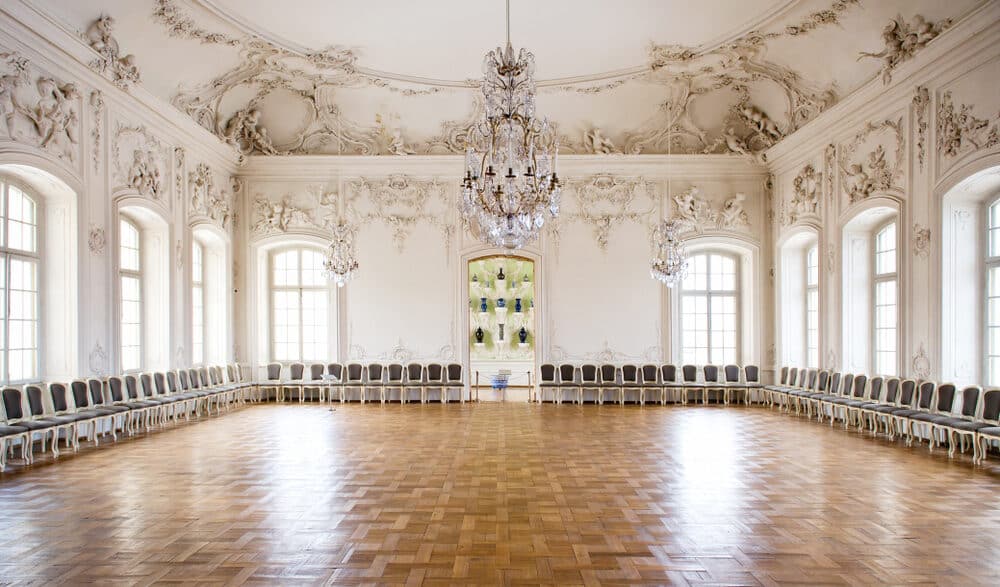
Evolution through the Ages
Cultural changes, technological advancements, and shifting aesthetic preferences have all played a part in the fascinating journey of wooden flooring through the ages. From its rudimentary beginnings to its status as a symbol of elegance and sophistication, the history of wooden flooring reflects broader trends in architecture, design, and social dynamics.
The Middle Ages:
During this period, wooden flooring began to evolve from simple, functional planks to more refined and decorative elements in homes and public buildings. In the grand halls of castles and manors, wide, thick planks of solid wood were laid. These were often made from local hardwoods, like oak, known for their durability and strength. The craftsmanship was basic, with little attention to detail or design, reflecting the utilitarian focus of the time.
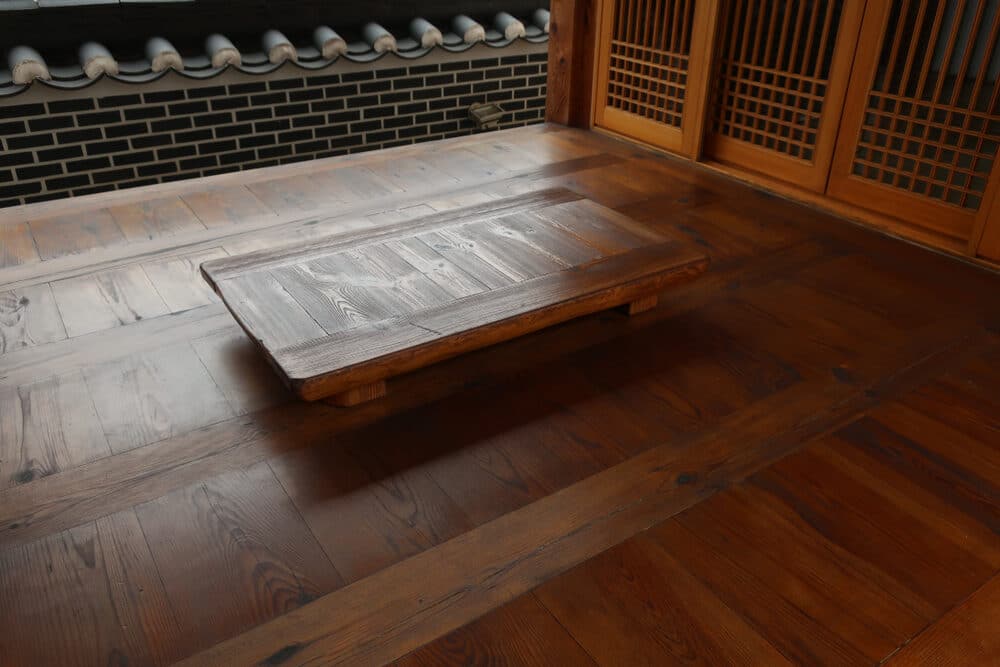
The Renaissance:
This era marked a significant turning point in the history of wooden flooring. The Renaissance’s emphasis on art and beauty permeated all aspects of life, including floor design. Artisans and craftsmen began experimenting with different woods and patterns, leading to the creation of intricate parquet floors. These floors featured geometric and angular shapes, showcasing the natural beauty of the wood and the skill of the craftsmen. Such floors became a status symbol, gracing the homes of the wealthy and influential.
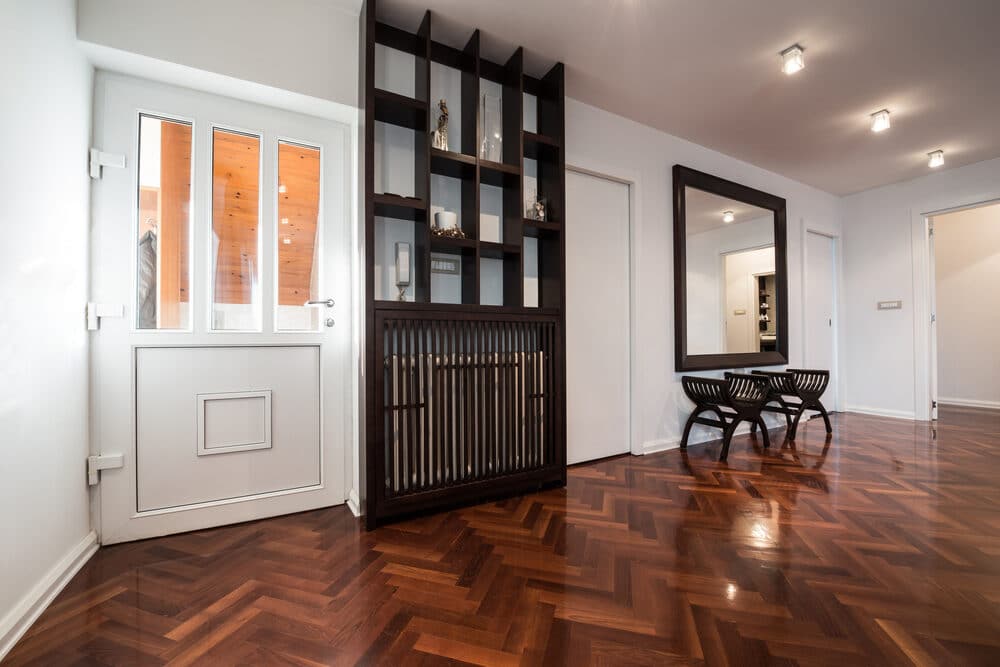
The Industrial Revolution:
The advent of industrialization in the 18th and 19th centuries brought about a radical change in the production and availability of wooden flooring. The introduction of machinery allowed for the mass production of wooden planks, making flooring more affordable and accessible to the middle class. Additionally, new finishing techniques, such as varnishing and staining, were developed, enhancing the durability and appearance of wooden floors. This period saw a shift from handcrafted, bespoke floors to standardised, mass-produced ones.
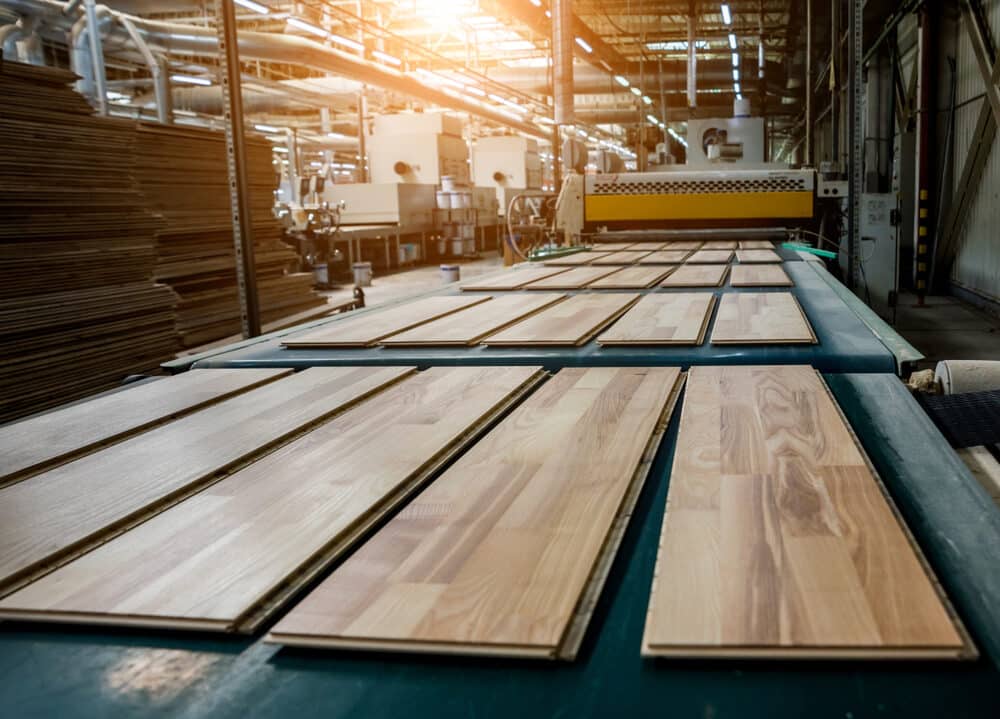
The 20th Century and Beyond:
In the 20th century, the popularity of wooden flooring continued, but it faced competition from new materials like linoleum and carpeting, which offered affordability and ease of maintenance. However, the late 20th and early 21st centuries saw a resurgence in the popularity of wooden floors, driven by a renewed appreciation for their natural beauty and sustainability. Technological advancements have made wooden flooring more versatile and environmentally friendly, with improvements in harvesting practices, recycling, and the use of reclaimed wood.
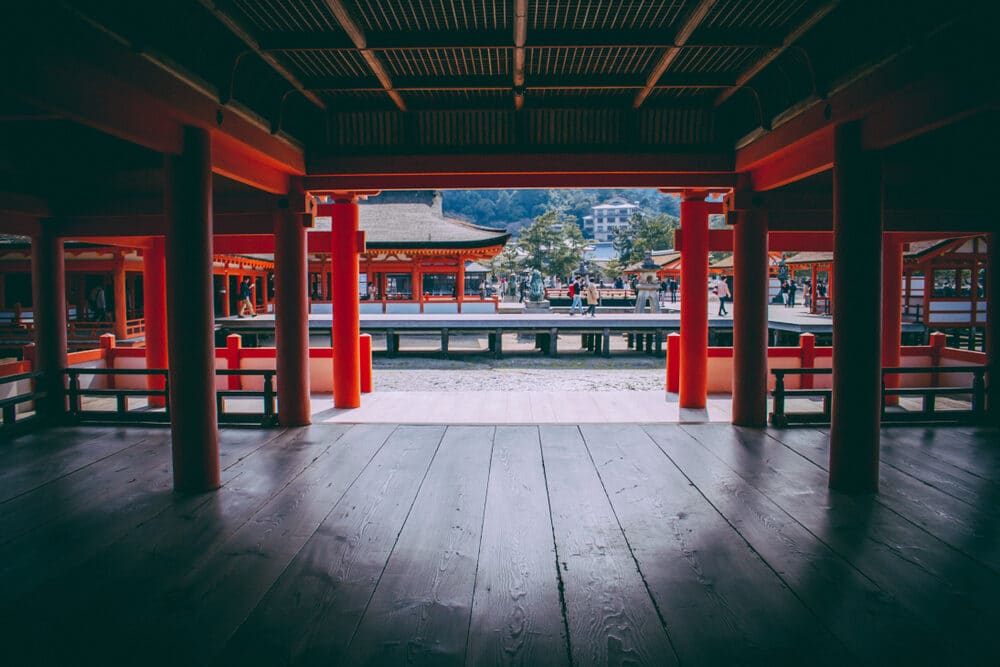
Different Types of Wood and Their Historical Significance
The history of wooden flooring is richly intertwined with the types of wood used throughout various periods, each type carrying its own historical significance and unique characteristics. These woods were chosen for their durability, beauty, and availability, and they played a pivotal role in the cultural and architectural styles of their times.
Oak:
Oak has been a staple in wooden flooring for centuries, particularly in Europe and North America. Revered for its strength, durability, and resistance to moisture and decay, oak was a practical choice for flooring in the Middle Ages and beyond. Its abundant availability in European forests made it a common material for the homes of the affluent as well as for public buildings. In historical contexts, oak flooring often symbolised stability and longevity, traits that aligned well with its physical properties.
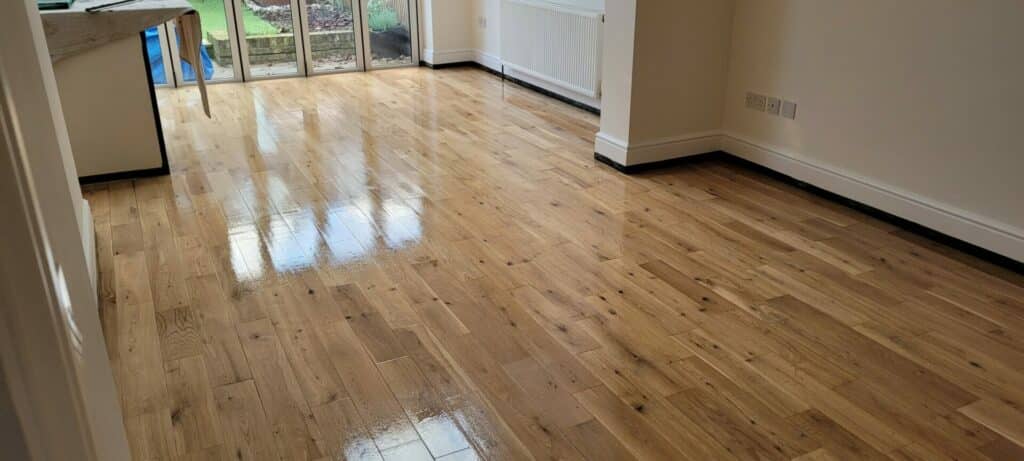
Mahogany:
Mahogany, known for its rich colour and fine grain, became popular in the 18th century, especially among the wealthy and aristocratic classes. This exotic hardwood was imported from colonies in the Americas and Africa, making it a symbol of luxury and opulence. Its use was a status symbol during the colonial period, often found in grand mansions and estates. Mahogany’s deep, reddish-brown hue and excellent workability made it a favourite for intricate parquet designs, contributing to its prestigious reputation.
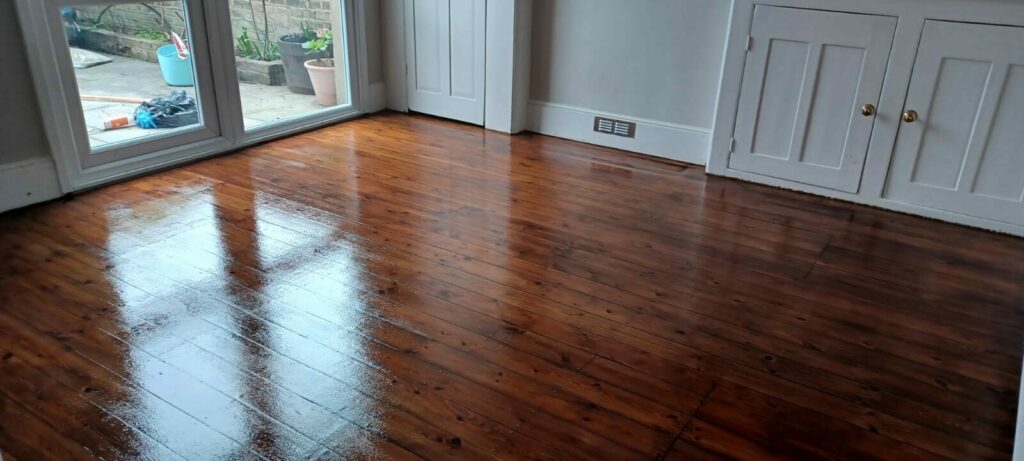
Pine:
Pine has been a common choice for flooring, especially in regions where it is abundantly available, like Scandinavia and North America. While not as hard or durable as hardwoods like oak or mahogany, pine was favoured for its affordability and ease of installation. In historical contexts, pine flooring was often associated with the homes of the middle and working classes. Its softer wood allowed for quicker wear, which over time contributed to a rustic, lived-in aesthetic that is still appreciated in certain design contexts today.
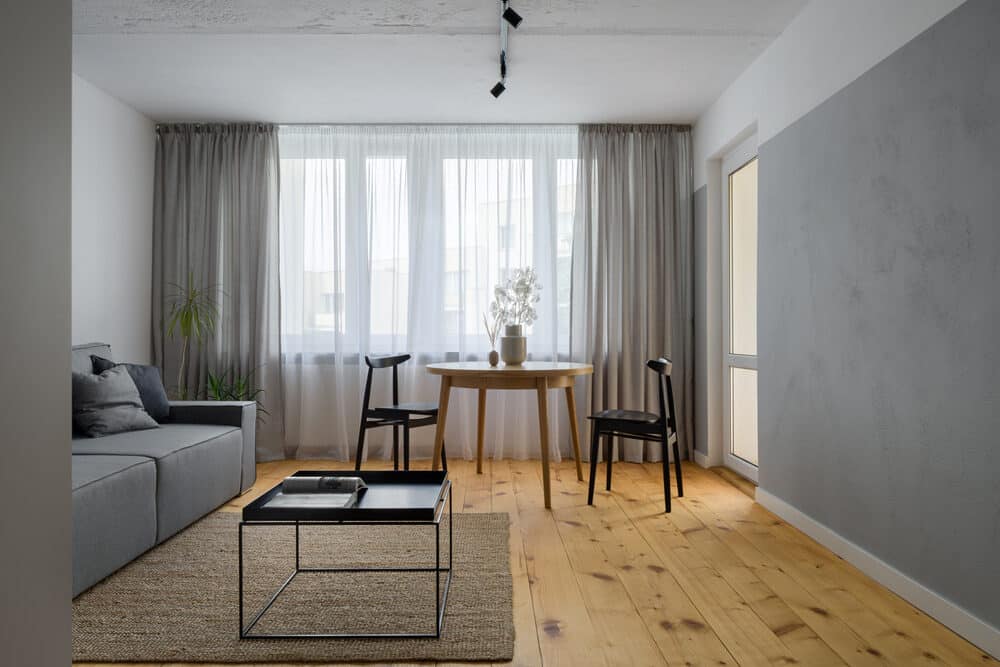
Teak:
Teak, with its natural oils, high durability, and resistance to pests and rot, has been prized for centuries in shipbuilding and later in flooring. Originating from Southeast Asia, teak was often used in the homes of the wealthy and in public spaces during the colonial period. Its golden-brown colour and smooth grain made it a luxurious and practical choice for flooring, particularly in regions with high humidity.
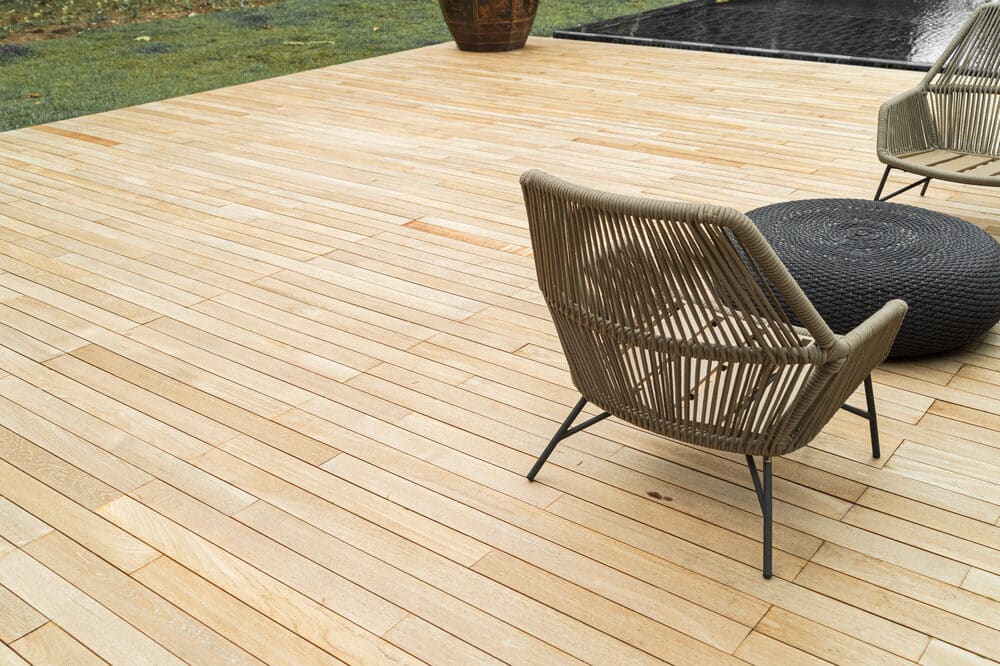
Bamboo:
Though technically a grass, bamboo has gained popularity as a flooring material in recent times due to its sustainability and rapid growth rate. Historically, bamboo has been used in Asian architecture for centuries, but its use as a modern flooring material represents a shift towards eco-friendly and renewable resources in building practices.
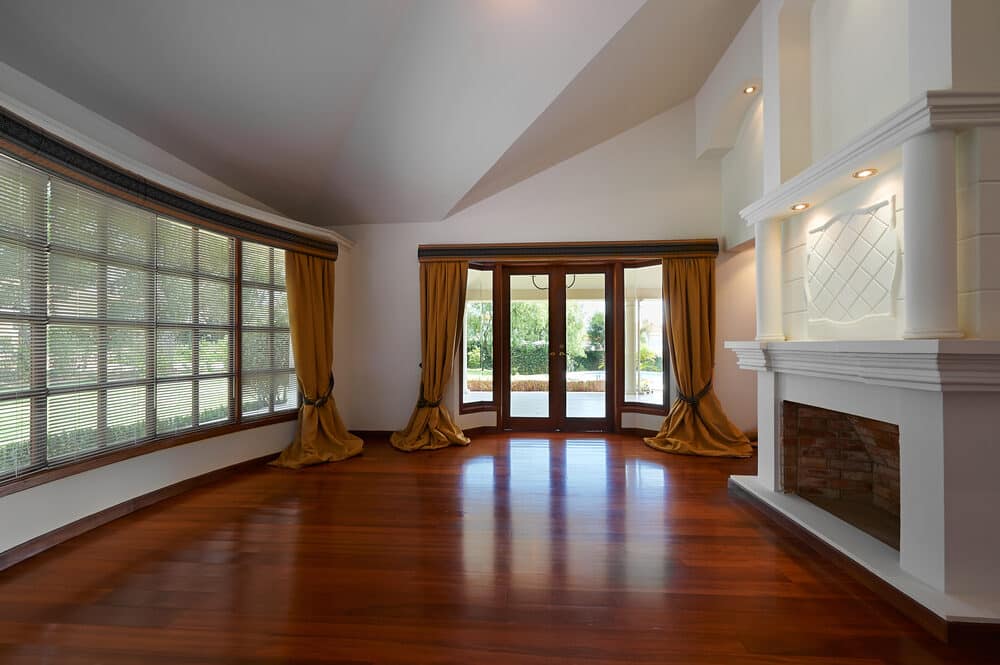
Wooden Floors in Modern Architecture and Design
Wooden floors have maintained a significant presence in modern architecture and design, continuing to evolve while retaining their timeless appeal. In contemporary settings, wooden flooring is appreciated not only for its aesthetic beauty but also for its versatility, sustainability, and ability to add warmth and character to living spaces.
Incorporation in Modern Design:
Modern design principles, characterised by clean lines, minimalist aesthetics, and a focus on natural materials, find a perfect complement in wooden floors. Architects and designers often use wooden flooring to add a touch of organic warmth to otherwise stark and modern interiors. The variety of wood types, with their distinct textures and colours, allows for great flexibility in design. Lighter woods like maple and birch can create a sense of openness and brightness, ideal for Scandinavian-style interiors, while darker woods like walnut or reclaimed oak can add richness and depth, suitable for more industrial or contemporary spaces.

Technological Advancements:
The advancement in technology has significantly influenced the use of wooden floors in modern architecture. Engineered wood, for instance, has become increasingly popular due to its stability, resistance to moisture, and sustainable use of wood resources. Additionally, modern finishing techniques have improved the durability and maintenance of wooden floors, making them more resistant to scratches and wear and easier to clean and care for.
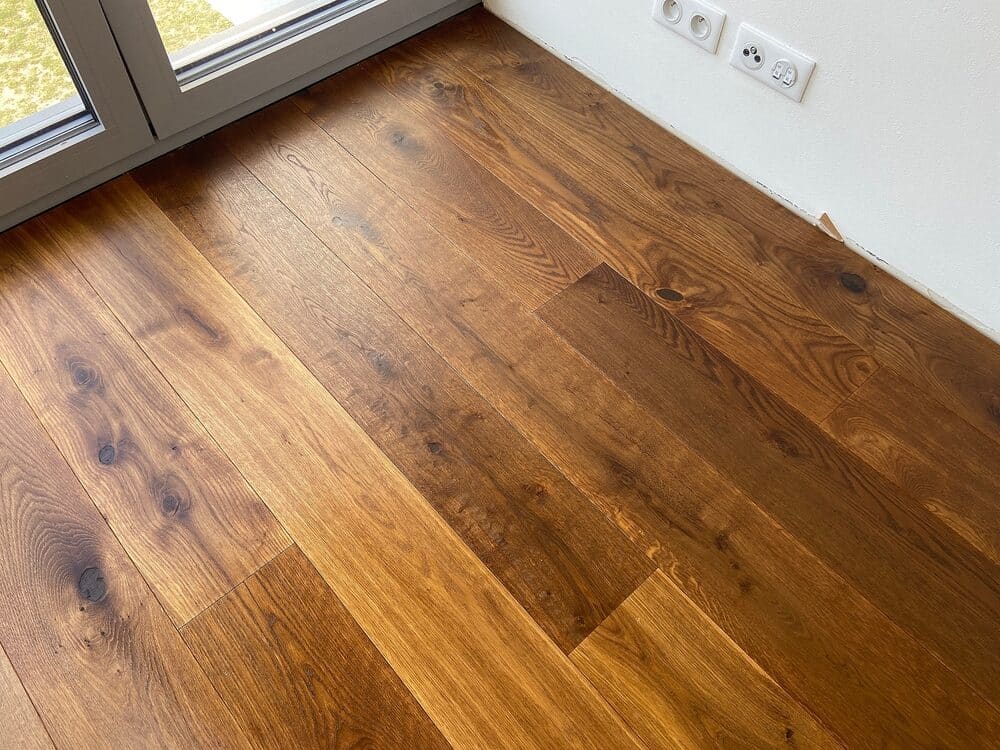
Sustainability and Eco-Friendliness:
In an era increasingly focused on environmental responsibility, wooden flooring is often chosen for its sustainability. The use of reclaimed wood, bamboo, and responsibly harvested timber reflects a growing commitment to eco-friendly design practices. These materials not only reduce environmental impact but also add historical and aesthetic value to the flooring.
Innovative Installations and Patterns:
Contemporary designers often experiment with laying patterns and mixing different types of wood to create unique and eye-catching floors. Herringbone and chevron patterns have seen a resurgence in popularity, offering a modern twist on traditional designs. The integration of mixed media, such as combining wood with metal or stone, is another trend that allows for creative and personalised floor designs.
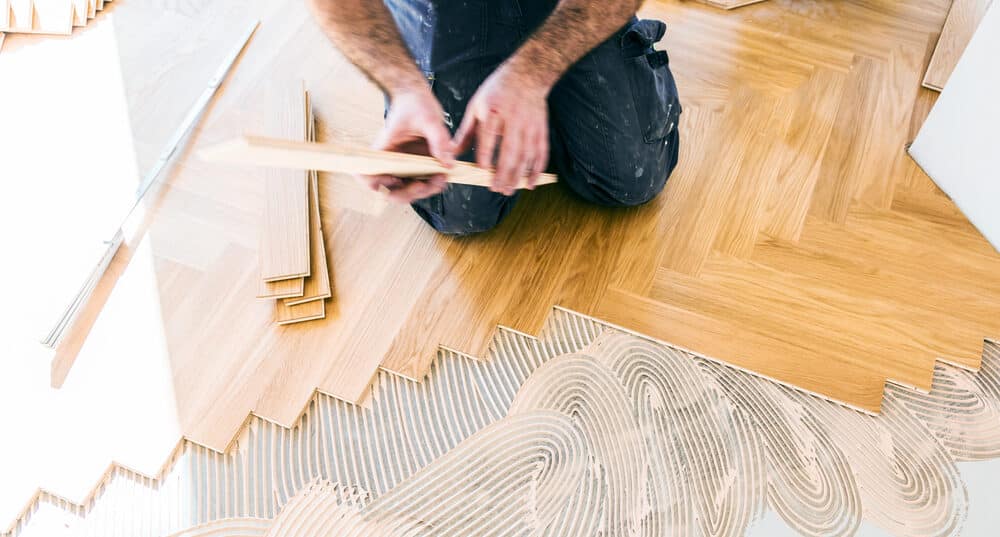
Cultural and Emotional Impact:
Beyond its functional and aesthetic attributes, wooden flooring in modern architecture often aims to create a connection with nature and a sense of comfort and warmth. There is a growing appreciation for the natural imperfections and variations in wood, which add character and uniqueness to spaces. This emotional and cultural resonance aligns well with contemporary trends towards authenticity and individuality in design.
Maintenance and Preservation of Wooden Floors
Maintaining and preserving wooden floors is essential to ensuring their longevity and retaining their natural beauty. Over time, wooden floors can suffer from wear and tear, but with proper care, they can last for generations. The approach to maintenance and preservation has evolved over the years, balancing traditional techniques with modern advancements.
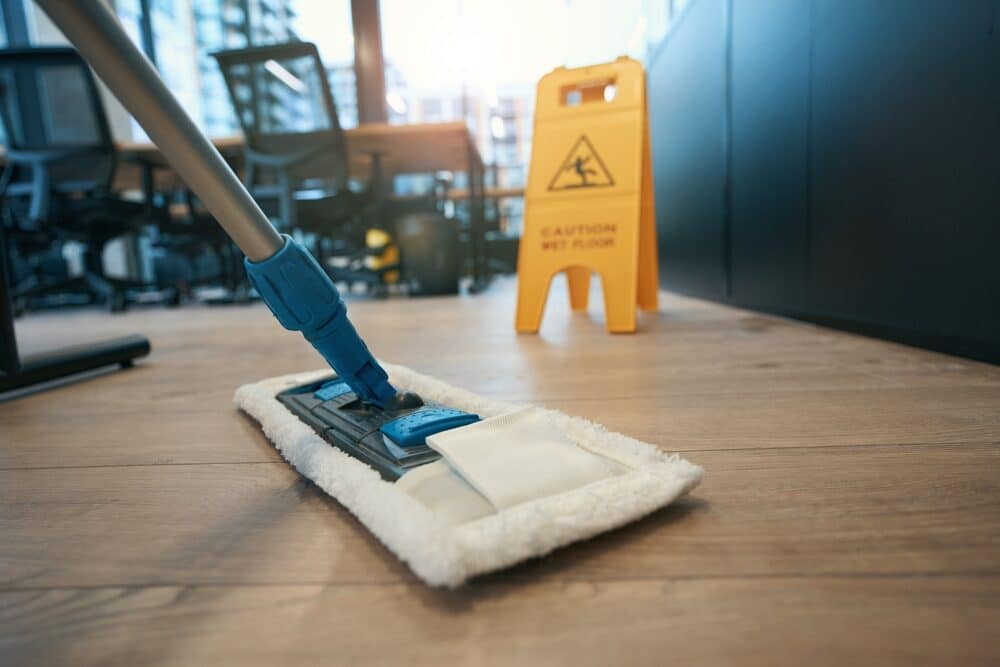
Traditional Techniques:
- Regular Cleaning: Historically, wooden floors were cleaned with natural substances like beeswax, turpentine, and linseed oil. These materials not only cleaned the surface but also provided a natural sheen and protection.
- Sanding and Refinishing: For older floors, sanding down the surface to remove scratches, dents, and stains was a common practice. Following wood floor sanding, floors were often refinished with varnish or oil to restore their lustre and protect them from future damage.
- Avoidance of Water and Moisture: Traditional wooden floors were highly susceptible to water damage. Care was taken to avoid exposure to moisture, and spills were promptly cleaned to prevent warping or staining.
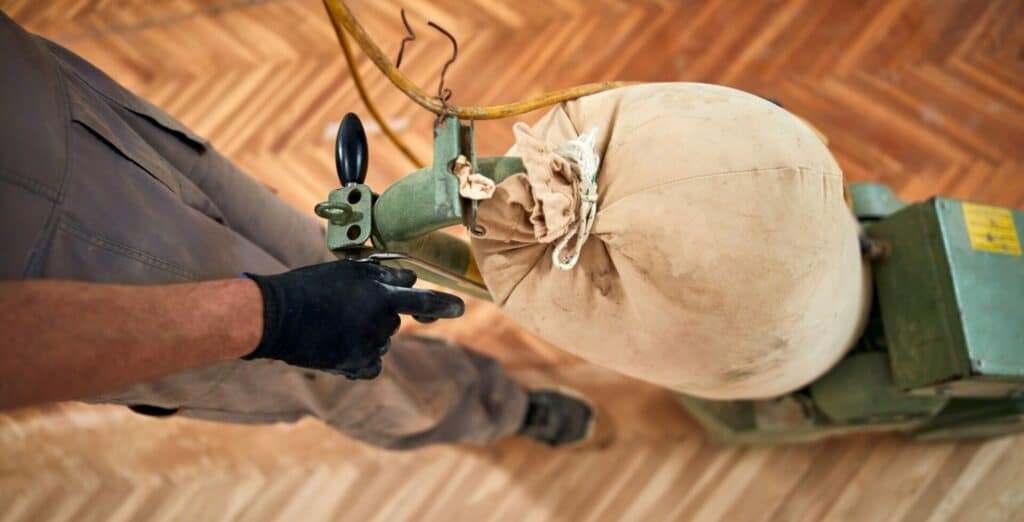
Modern Methods:
- Gentle Cleaning Products: Today, there are numerous specially formulated cleaning products designed for wooden floors. These products are gentle on the wood while being effective in removing dirt and grime.
- Use of Sealants: Modern wooden floors often come pre-treated with durable sealants like polyurethane. These sealants provide a protective layer that is resistant to scratches, moisture, and stains, reducing the need for frequent refinishing.
- Regular Maintenance: Modern maintenance includes regular sweeping or vacuuming to remove dirt and grit and using microfiber mops for damp cleaning. It’s advised to avoid excessive water or steam cleaning, which can damage the wood.
- UV Protection: To prevent discoloration from sunlight, modern wooden floors can be treated with UV-resistant sealants, and homeowners can use blinds or curtains to limit direct sun exposure.
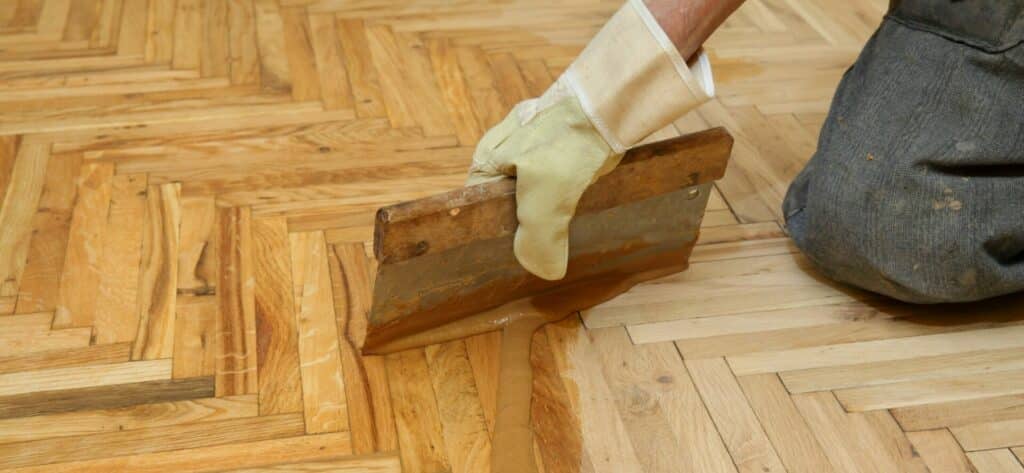
Preservation in Historical Buildings:
- Sensitive Restoration: In historical buildings, preserving the original wooden floors is crucial. Floor Restoration often involves gentle cleaning, careful floor sanding, and refinishing with materials that match the era of the building.
- Retaining Character: Preservation efforts focus on maintaining the historical integrity of the floors. This might mean embracing certain imperfections that contribute to the floor’s character and historical value.

Balancing Tradition and Innovation:
The key to successful maintenance and preservation lies in balancing traditional techniques with modern methods. While contemporary advancements offer effective solutions for protection and care, traditional methods are often preferred for their authenticity, especially in historical restorations. In both cases, the goal is to maintain the natural beauty and integrity of the wood, ensuring that wooden floors continue to add warmth and character to spaces for years to come.
The Future of Wooden Flooring
The future of wooden flooring is poised at an exciting intersection of tradition and innovation. As we move forward, several trends and technological advancements are shaping the way wooden floors will be used, designed, and appreciated. Here are some key aspects that are likely to influence the future of wooden flooring:
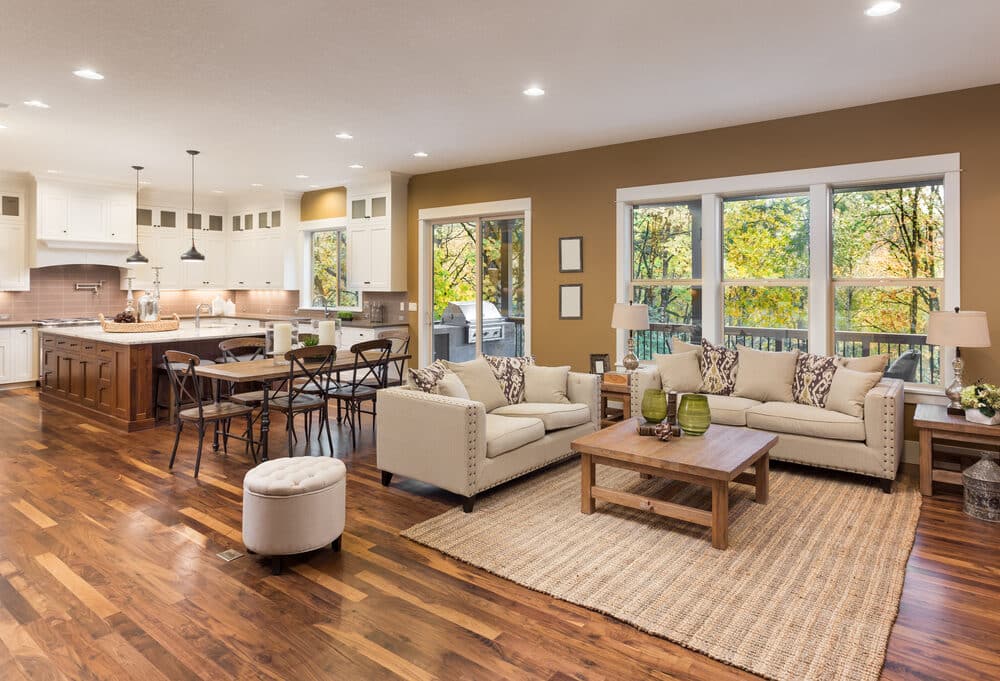
Technological Innovations:
Advancements in manufacturing and finishing technologies will continue to enhance the durability, sustainability, and aesthetic variety of wooden floors. Engineered wood, which already offers stability and moisture resistance, will likely see further improvements. Innovations in protective coatings will enhance scratch and wear resistance, making wooden floors more durable and easier to maintain.
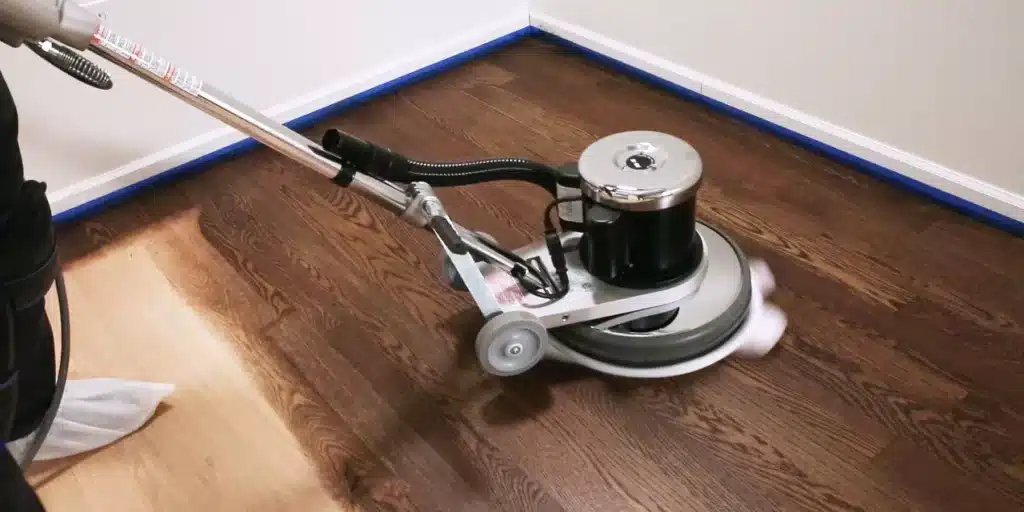
Sustainable Practices and Materials:
As environmental concerns become increasingly paramount, the focus on sustainability in wooden flooring will grow. This includes the use of responsibly sourced timber, increased reliance on reclaimed and recycled wood, and the adoption of eco-friendly manufacturing processes. Bamboo and other rapidly renewable resources will become more prevalent, offering an eco-conscious alternative to traditional hardwoods.
Customisation and Personalisation:
With advancements in digital printing and manufacturing, the ability to customise wooden floors will expand. Consumers will have more options to personalise their floors with unique colours, patterns, and finishes, allowing for greater creative expression in interior design.
Smart and Integrated Flooring:
The integration of technology into flooring is a potential future trend. This could include floors with built-in sensors to monitor environmental conditions or track health-related metrics, like footfall patterns or air quality. While still in the realm of speculation, these smart floors could add a new dimension to how we interact with our living spaces.
Aesthetic Trends:
The aesthetic preferences for wooden flooring will continue to evolve. There might be a resurgence of interest in historical patterns and styles, blending them with modern design elements. Alternatively, minimalistic and natural finishes that highlight the wood’s inherent beauty could dominate, reflecting a broader trend towards organic and authentic interior design.
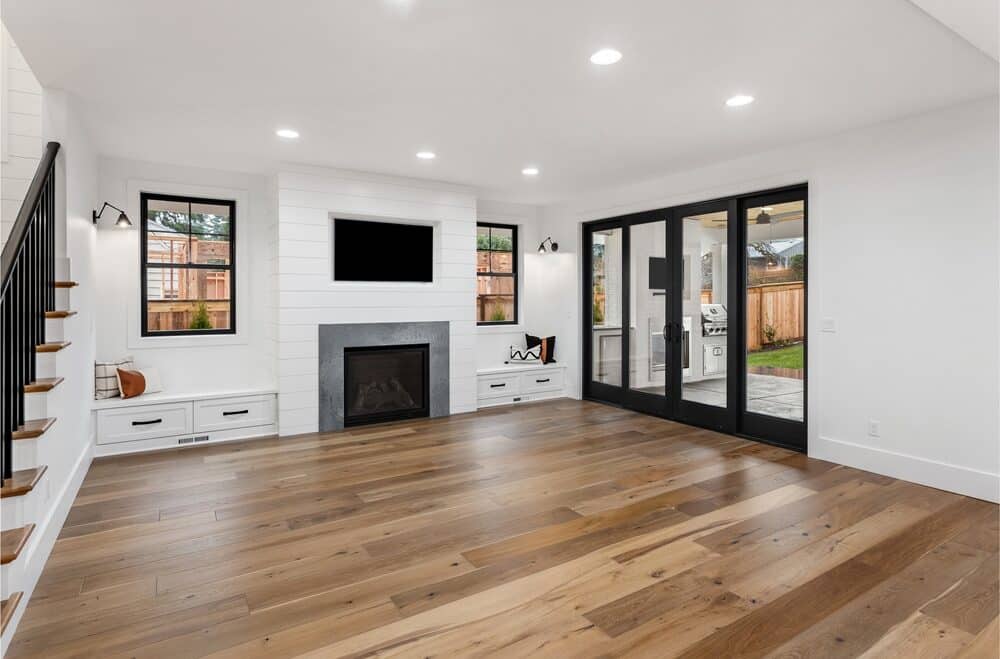
The Role of Tradition:
Despite these advancements, the traditional appeal of wooden floors—their warmth, natural beauty, and timelessness—will continue to be cherished. The historical significance and the tactile connection to nature that wooden floors provide are irreplaceable qualities that will maintain their allure.
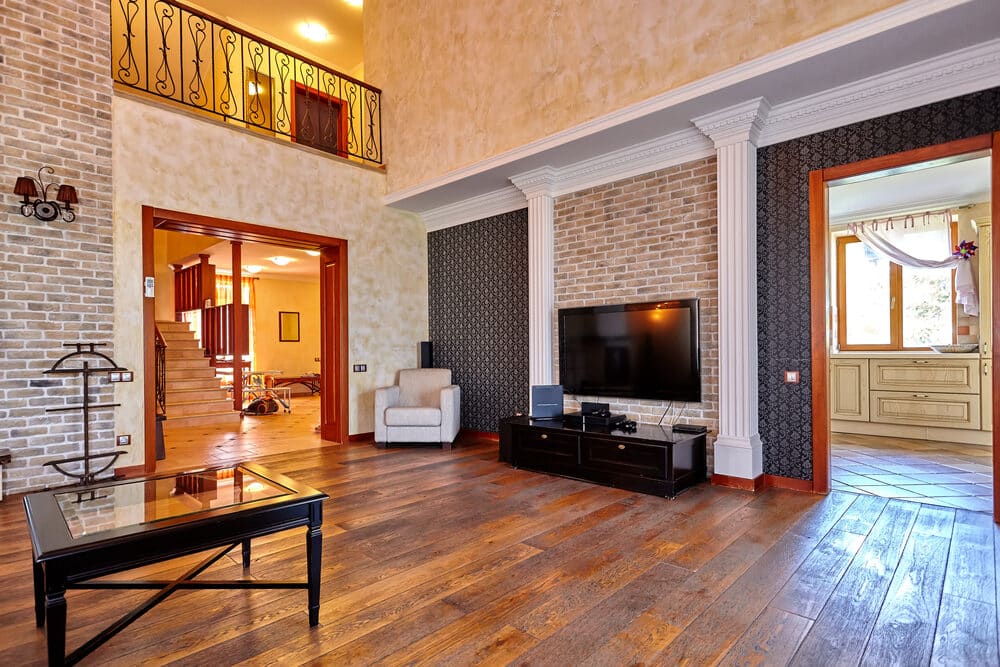
Conclusion
In conclusion, the journey of wooden flooring from its humble origins to its status as a cherished element in modern architecture and design is a testament to its enduring appeal. Throughout history, wooden floors have evolved, adapting to changing technologies, aesthetic preferences, and cultural shifts, yet they have consistently retained their intrinsic beauty and practicality.
Wooden floors have stood the test of time, not only as a functional aspect of construction but also as an art form that reflects the craftsmanship and cultural heritage of different eras. From the sturdy oak planks of mediaeval castles to the intricate parquet of Renaissance manors and onto the eco-friendly and technologically advanced floors of today, wooden flooring continues to be an integral part of our living spaces.
The future of wooden flooring promises further innovations in sustainability, technology, and design. However, the core attributes that have always made wooden flooring popular—its natural warmth, durability, and timeless elegance—are likely to remain central to its appeal. Whether in a traditional setting or a contemporary space, wooden floors offer a unique blend of history, artistry, and practicality, making them a perennial favourite in the world of architecture and interior design.
As we continue to tread upon these storied surfaces, we not only walk on mere planks of wood but on centuries of history, a legacy of craftsmanship, and a testament to the enduring relationship between humans and nature. Wooden floors, in their simple elegance and enduring appeal, remind us of the timeless beauty inherent in the natural world and our enduring desire to bring that beauty into our homes and lives.

Sanding
We provide virtually dust-free sanding with our continuous belt machinery with mobile extraction units, giving you a safer environment for your family.
Oiling
This organic finish not only adds beauty to your home but also has exceptional water-repellent characteristics, making it easier to clean and maintain.
Waxing
This natural floor finish offers the softest and most mellow appearance – and leaves your floor able to breath.
Buffing
Using soft buffing machines (and hand-polishing where required) will bring a wonderful sheen to your newly-finished floor.
Repairs
We offer a full assessment of your wooden floors to determine what repairs are needed to provide the perfect working surface for the later stages of sanding, staining and sealing.
Restoration
We offer a comprehensive restoration process designed to address floors that are improperly fitted or damaged over time through wear and tear.
Request a fixed price quote for your wood floor restoration now
Simply enter your postcode below to get started.
Services
Wood Floor Sanding Wood Floor Restoration Wood Floor Scratch Repair Squeaky Wood Floor Repair Parquet Floor Sanding Parquet Floor Restoration Commercial Floor Sanding Church Floor Sanding Community Centre Floor Sanding School Floor Sanding Gap Filling Gap Filling with ResinCopyright © Mr Sander®
Privacy & Cookies Terms & Conditions Complaints Procedure Cancellation Rights Sitemap
